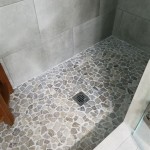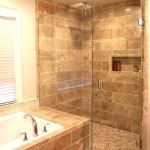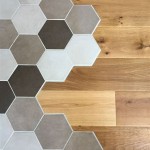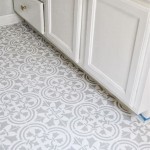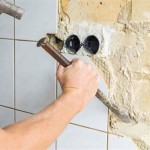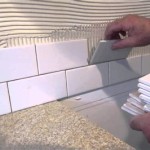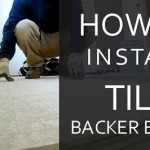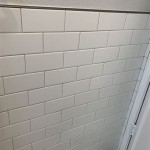Can Backsplash Tile Be Installed On Drywall?
The question of whether backsplash tile can be successfully installed directly onto drywall is a common one, particularly for homeowners undertaking kitchen or bathroom renovations. The short answer is yes, tile can be installed on drywall. However, the long answer involves several crucial considerations that can significantly impact the longevity and success of the tiling project. Neglecting these factors can lead to a range of issues, from loose tiles to water damage, making it essential to understand the proper procedures and potential pitfalls involved.
Drywall, also known as gypsum board, is a widely used construction material for interior walls and ceilings. It offers a relatively smooth surface that appears suitable for tiling. However, drywall’s inherent properties differ significantly from those of materials traditionally used as tile substrates, such as cement board. Understanding these differences is crucial for making informed decisions about surface preparation and the appropriate installation techniques.
The primary concern when installing tile on drywall is its susceptibility to moisture damage. Drywall is porous and can absorb water, leading to swelling, softening, and ultimately, structural failure. In areas prone to moisture, such as kitchens and bathrooms, this vulnerability is significantly exacerbated. The constant exposure to water from sinks, showers, and spills can compromise the drywall behind the tile, causing the tile to loosen or even detach completely.
Furthermore, drywall is not as strong or rigid as cement board. The weight of the tile, combined with the constant stresses from daily use and temperature fluctuations, can place a significant burden on the drywall. Over time, this can lead to cracking or warping of the drywall, compromising the integrity of the tiled surface. Therefore, careful consideration must be given to the type and size of tile selected when installing on drywall.
Surface Preparation is Paramount
Proper surface preparation is the most critical factor in ensuring the successful installation of backsplash tile on drywall. This involves several steps designed to create a strong and stable base for the tile, minimizing the risk of moisture damage and ensuring proper adhesion. The first step is a thorough cleaning of the drywall surface. This removes any dust, dirt, grease, or other contaminants that could interfere with the bonding of the tile adhesive. A mild detergent solution followed by a clean water rinse is typically sufficient for this purpose.
Once the drywall is clean, it is essential to inspect it for any damage, such as cracks, holes, or loose paper facing. Any imperfections must be repaired before proceeding with the tiling. Small holes can be filled with drywall compound, while larger cracks may require taping and mudding to provide a smooth and stable surface. Loose paper facing should be carefully removed and the underlying gypsum board cleaned to ensure proper adhesion of the repair material.
After repairing any damage, the entire drywall surface should be primed with a suitable primer. The type of primer used is crucial. A high-quality acrylic latex primer is generally recommended, as it provides excellent adhesion and helps to seal the drywall, reducing its susceptibility to moisture. The primer should be applied according to the manufacturer's instructions, typically requiring one or two coats, with sufficient drying time between coats.
In some cases, depending on the size and type of tile being installed, it may be necessary to apply a layer of thin-set mortar directly to the primed drywall. This creates a more even and stable surface for the tile and can improve the overall bond strength. If this step is taken, the thin-set mortar should be applied thinly and evenly, ensuring full coverage of the drywall surface. It is crucial to allow the thin-set mortar to dry completely before proceeding with the tile installation.
Choosing the Right Adhesives and Sealants
The selection of appropriate adhesives and sealants is another critical aspect of installing backsplash tile on drywall. The type of adhesive used will directly impact the bond strength between the tile and the drywall, while the sealant will prevent water from penetrating behind the tile and damaging the underlying substrate.
When selecting a tile adhesive, it is essential to choose one that is specifically designed for use on drywall. These adhesives typically have a higher bond strength and are formulated to be more flexible, accommodating slight movements in the drywall without cracking or failing. Modified thin-set mortars are commonly used for this purpose, as they contain additives that improve adhesion and water resistance. It is crucial to follow the manufacturer's instructions carefully when mixing and applying the adhesive, ensuring the correct consistency and application thickness.
In addition to the tile adhesive, it is essential to use a high-quality grout to fill the gaps between the tiles. Grout not only enhances the aesthetic appearance of the tiled surface but also helps to prevent water from seeping behind the tile. Epoxy grout is often recommended for backsplash installations, as it is highly water-resistant and stain-resistant. However, epoxy grout can be more difficult to work with than traditional cement-based grout, so it is important to follow the manufacturer's instructions carefully.
Finally, a high-quality sealant should be applied to all edges and corners of the tiled backsplash to prevent water from penetrating behind the tile. Silicone caulk is commonly used for this purpose, as it is flexible, waterproof, and available in a wide range of colors to match the grout. The sealant should be applied carefully and evenly, ensuring that all gaps and cracks are completely sealed.
Alternatives and Considerations
While installing tile directly on drywall is possible with proper preparation and the use of appropriate materials, there are alternative approaches that offer enhanced durability and water resistance. One such alternative is to replace the drywall with cement board. Cement board is a water-resistant material that is specifically designed for use as a tile substrate in wet areas. It provides a more stable and durable base for the tile than drywall, reducing the risk of moisture damage and tile failure.
Installing cement board involves removing the existing drywall and replacing it with cement board panels. The cement board panels are typically attached to the wall studs with screws, and the seams between the panels are taped and mudded to create a smooth and seamless surface. While this approach requires more effort and expense than installing tile directly on drywall, it provides a significantly more reliable and long-lasting solution, particularly in areas prone to high moisture levels.
Another consideration is the type and size of tile being installed. Larger and heavier tiles place a greater strain on the drywall, increasing the risk of cracking or warping. Therefore, it is generally recommended to use smaller and lighter tiles when installing on drywall. Smaller tiles distribute the weight more evenly and are less likely to cause stress on the underlying substrate.
Furthermore, porous tiles, such as natural stone tiles, are more susceptible to water damage than non-porous tiles, such as ceramic or porcelain tiles. If using porous tiles, it is essential to seal them thoroughly before grouting to prevent water absorption. Regular sealing is also necessary to maintain the water resistance of the tile over time. Choosing non-porous tiles can simplify maintenance and reduce the risk of moisture-related problems.
Ultimately, the decision of whether to install backsplash tile directly on drywall depends on a variety of factors, including the budget, the level of experience, and the specific conditions of the installation environment. While installing on drywall can be a viable option with proper preparation and the use of appropriate materials, it is essential to carefully weigh the risks and benefits before proceeding. In some cases, replacing the drywall with cement board may be a more prudent investment in the long run, ensuring a durable and water-resistant tiled backsplash.

How To Add Subway Tile Backsplash Over Drywall Transform Your Kitchen For 100

How To Install Tile Backsplash Fixthisbuildthat

How To Prepare Drywall For A Tile Backsplash Mr Handyman

How To Prepare Drywall For A Tile Backsplash Mr Handyman

Can You Tile Over Drywall Must See

Can You Install A Ceramic Tile Backsplash On Drywall Today S Homeowner

A Subway Tile Backsplash Install Art Renovation

How To Install Tile Backsplash Fixthisbuildthat

Removing Backsplash And Repairing Drywall Made With Grace Grit

Installing A Tile Backsplash
Related Posts

